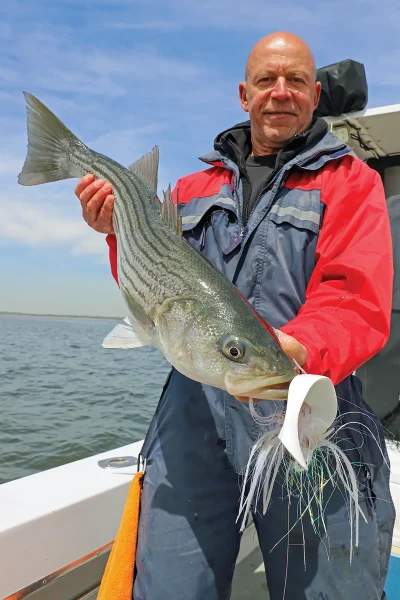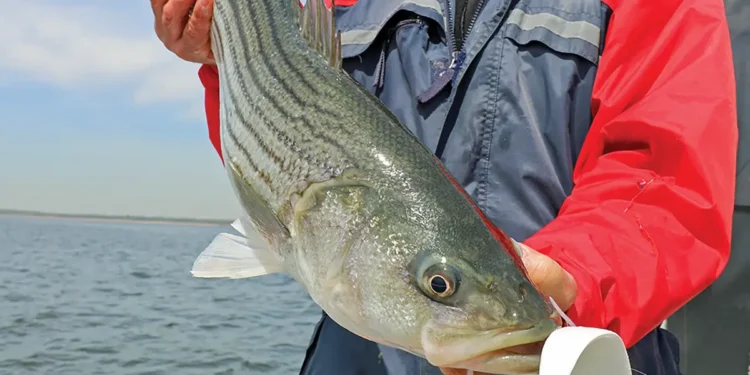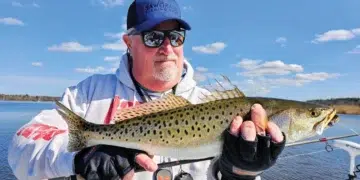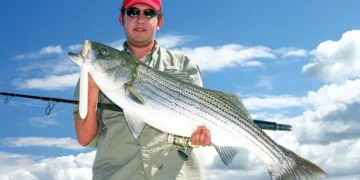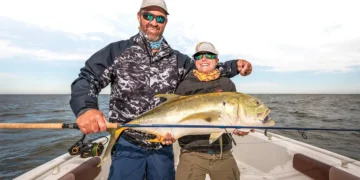Experiment with large offerings in the coming months.
“Big baits catch big fish!” It’s a short saying that carries a lot of weight with true lunker hunters. Follow the mantra and you’ll probably catch fewer fish per trip, but many of the ones you do deck will come with bragging rights.
While the idea has probably been around as long as modern recreational fishing itself, there seems to be restressing of the theory in recent years. Following several decades of anglers increasingly shifting to lighter tackle to better tempt heavily pressured and wary species, the pendulum seems to be swinging to the point that a surprising number of sharpies are using outlandishly large baits and lures on a regular basis.
Also Read
A Quick Preview Inside the Aquila 46 Yacht: Beam, Layouts, And More
Aquila 46 Yacht Quick Facts Model: Aquila 46 Yacht (new for 2025)Design DNA: “Explorer” aesthetic from the Aquila 50 YachtCertification:...
My introduction to big bait theory came early. At age 10, I struck an agreement with my parents for permission to ride my bike to a local pond in exchange for mowing the lawn. Simple bluegills were the target on my first trip, but hungry largemouth bass provided my first glimpse into the big bait, big fish theory.
The morning had already been a rousing success, granting me several tasty panfish that would accompany me home as they sloshed in a bucket of water hung over my handlebars. On my last cast, however, I hooked a 5-inch bluegill on a small piece of worm dangling below my float. As I reeled it past a point of lily pads just yards from my feet, a 16-inch largemouth exploded on the sunny and miraculously stayed pinned to the end of my line as I wrestled it ashore. What a thrill!
Subscribe Here For More Boating Content
The next several weeks saw the lawn mowed early so I could live-line panfish of all varieties in that little farm pond, with several bass in the 3- to 4-pound range my reward. By age 12, I had discovered large golden shiners worked even better on bass, and in my early teens, I graduated to casting 7-inch Rebel and Rapala minnows, big Jitterbugs, and rotund weedless frogs. Each upgrade in size resulted in fewer but larger bass. My fascination with throwing big plugs, poppers, and soft-plastic baits for predatory fish of all sorts has never waned.
Over the years, my big bait theory has been reinforced time and again through personal experience and the guidance of master anglers and some amazing fishing mentors. I’ve always been curious, for example, just how big a prey a hungry lunker could handle. About 10 years ago, I think I got my final answer.
Also Read:
Increased Cruising Permit Fees – Bahamas’ New Rules Take Effect July 1
Updated July 31, 2025. If the Bahamas is on your cruising itinerary, pay attention: Starting July 1, 2025,...
On a visit to Connetquot River State Park Preserve in Oakdale, New York, I was gazing into a temporary holding pen of breeding-sized rainbow trout one morning when a gentle wake caught my eye. Closer inspection revealed a foot-long brown trout with half the body of a 9-inch brookie protruding from its mouth—tail still finning slowly. It took that fish 20 minutes to completely swallow its meal a quarter-inch at a time. I still can’t figure how the one fit inside the other.
Another head-turning example came from a discussion with the late Charlie Nappi, the summer flounder International Game Fish Association (IGFA) world record holder for fluke with a 22-pound, 7-ounce doormat decked in 1975. Nappi had a reputation for fishing big baits, often using 6- to 10-inch live snapper bluefish for fluke and weakfish. When I asked him how big a bait was too big, he said he didn’t know just yet but had once caught a 350-pound mako shark on a 75-pound live-lined tuna! The point is, it might be a good idea to experiment with some larger offerings in the months ahead.
-by Tom Schlichter
The Full Feature Photo - Big Bait, Big Fish
